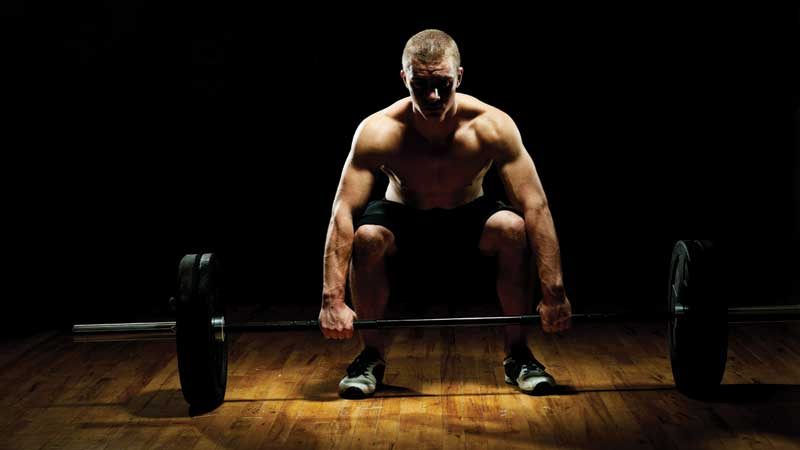How to deadlift more without getting injured
Deadlifting more weight means more growth hormone production, and therefore muscle. Warm up, go hard and go home safe

The deadlift is probably the most functional exercise you can do. It uses nearly every major muscle group and most of the small, stabilising muscles, which increases levels of growth hormone and testosterone to help you build strength and muscle mass. But like every big lift, it has risks if you don’t warm up properly or you use incorrect form. These range from prolapsed discs and nerve impingement to ruptured tendons. But don’t fret – following the steps below will ensure you avoid the pitfalls.
Warm welcome
Warming up is crucial for avoiding injury, especially for big compound lifts. For beginners, I’d first recommend lifting an empty bar and focusing on form (see the box below). Then you can add weight with every subsequent warm-up set, increasing it each time by 10-20% of the weight you intend to lift in your main workout per set, until you reach around 80-90% of that. You should also perform extra reps during your early warm-up sets, then reduce the amount incrementally until you reach your main workout rep range in your final warm-up set.
So if your main workout is three sets of five reps with 100kg, warm up by performing eight reps with an Olympic bar (which weighs 20kg), followed by seven reps with 40kg, six reps with 60kg and five reps with 80kg, resting for two minutes between sets. This means the heavier you lift, the longer it takes to warm up, but it’s worth the effort to stay injury-free.
Flex appeal
A key element of correct deadlift form is keeping your back flat with your spine in a neutral position, but this can be tricky if you’re not flexible. Adding light Romanian deadlifts to your warm-up will help loosen your hamstrings, but if you’re still struggling with form, try elevating the bar in a low rack, because this reduces the pressure on your lower back. As your hamstring flexibility improves, you can gradually reduce the elevation.
Deadlifting with a mixed grip (one hand in an overhand grip and the other underhand) allows you to lift more weight but increases spinal rotation and makes it harder to maintain a strong back position. If you want to keep the lift as safe as possible, stick to a regular grip. If you use a mixed grip, switch hands with every set to minimise the risk of muscle imbalances.
Perhaps the most important thing to remember is to train to technical failure rather than complete failure. Stop as soon as your form slips, rather than trying to force out extra reps. You’ll progress faster and stay healthier.
How to deadlift properly (and safely)
Stand with your feet between shoulder and hip-width apart and the bar 3cm or so from your shins. Grab the bar just outside your legs using an overhand grip, arms locked out and as narrow as possible.
Sign up for workout ideas, training advice, reviews of the latest gear and more.
Bend your knees until your shins touch the bar, then squeeze your shoulder blades together, push your chest up and brace your core.
Lift the bar directly up, maintaining the arch in your back until the bar passes your knees, then push your pelvis forward, bringing your back into a vertical position, with the bar touching your legs throughout.
Lower under control by pushing your hips back and bending your knees as the bar passes the top of your shins.
This article is by Lawrence Farncombe, a strength coach with 20 years’ experience working with athletes in a variety of sports, including powerlifting, boxing and triathlon. Farncombe is an ambassador for Bio-Synergy.
